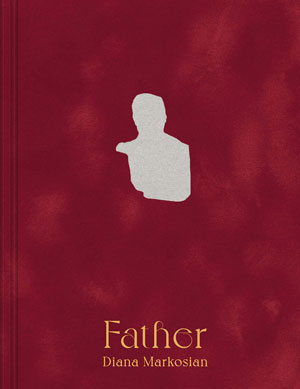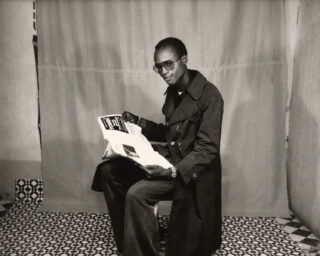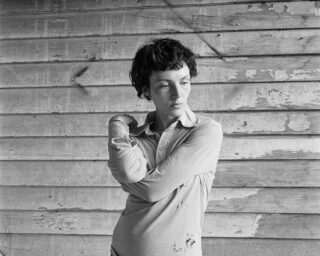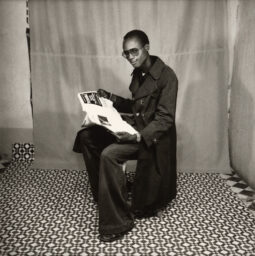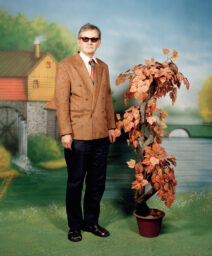Essex Hemphill’s Love Knew No Bounds
A crucial voice for Black queer desire and liberation, the late poet—finally back in print—has ignited a fire in American artists across generations.
Lyle Ashton Harris, Essex Hemphill, LA Contemporary Exhibitions, Los Angeles
© the artist
The activist and poet Essex Hemphill, who died in 1995, at age 38, due to complications from AIDS, was a singular voice. “I’m an oversexed / well-hung / Black Queen / influenced / by phrases like / ‘I am the love that dare not speak its name,’” he writes in “Heavy Breathing” (1992). The poem, exemplary of Hemphill’s work, eulogizes the unfulfilled promises of civil rights and beseeches a place for the poor gay Black man—and others left in the margins—at the table of a solidifying African American nationalism in the waning years of the twentieth century. “At the end of heavy breathing / the dream deferred / is in a museum / under glass and guard.” Hemphill’s unflinching gaze, fervent advocacy for the downtrodden, and love of collaboration have made him a major influence for many of his peers and generations thereafter, for writers, and especially for visual artists.
Born in Chicago in 1957, Hemphill moved with his family to Anacostia, a segregated neighborhood in Southeast Washington, DC, in the 1970s. He was awakened spiritually and erotically by the closeted Harlem Renaissance literature of Countee Cullen, Langston Hughes, and Richard Bruce Nugent, and emboldened by the clarity and poise of public intellectuals such as James Baldwin and Audre Lorde. These figures served as guiding lights over the corporeal realities of poverty, racial and gendered violence (by state or kin), and the crack and AIDS epidemics. “I live in a town / where pretense and bone structure / prevail as credentials of status and beauty / . . . where everyone is afraid of the dark,” Hemphill writes in “Family Jewels” (1992). Cabs speed past him, refusing service. Meanwhile, “My mother’s flowers are wilting / . . . Our dinner is cold / by now.” In taking up poetry and performance, Hemphill found a path to dignity and self-liberation.

Courtesy Wayson Jones

© Sharon Farmer/sfphotoworks
Fashioning an alternative to the American dream deferred was by no means a solitary endeavor. In DC, Hemphill was part of a vibrant literary, performing and visual arts scene. He founded the Nethula Journal, a platform for young writers of color, with Kathy Anderson and Cynthia Lou Williams. With his friends Wayson Jones and Larry Duckette, he formed the spoken word group Cinque. His early work appeared in Joseph Beam’s revolutionary In the Life: A Black Gay Anthology (1986), the first of its kind to center Black gay, lesbian, and trans perspectives. When Beam died of AIDS in 1988, Hemphill published the follow-up Brother to Brother: New Writings by Black Gay Men (1991). For a constellation of underground communities along the East and West Coasts, this period in the ’80s through early ’90s was a veritable Black Gay Renaissance, more creatively free, more academic and brazenly political, more unapologetically Black, queer, and sexual than the movements that came before.

Essex Hemphill: Take care of your blessings, a group exhibition curated by Camille Brown at the Phillips Collection, in Washington, DC, commemorates the bygone era in which the poet thrived, and celebrates the dream that he kept alive for the next generation. Brown gathers multimedia works by friends and creative partners, and those of younger artists whose practices engage with Hemphill’s writing. In a town of memorials set in stone, the show pulsates with optimism and collective life. It is dedicated to someone who was of these streets and who, hard as the powers that be may have tried, refused to be rendered a ghost or statistic, and did what he could to save others from that fate.
Hemphill’s poems have been collected in a new volume by Robert F. Reid-Pharr and John Keene, Love Is a Dangerous Word (2025). To read them—a selection is projected in the main gallery over a cabinet of self-published chapbooks and performance programs—is to become entangled in a bed of blood, sweat, tears, spit, and spunk. That is, to be swept off your feet by unrelenting waves of desire, rage, sorrow, and, despite everything, tenderness. Much as the speaker is looking for love in back rooms, underground clubs, and public parks, he is cruising time itself for redemption in the past or hope for the future. He is discursive, provocative, witty, and lyrical, Mercutio playing jester to the hypocrisy of the American enterprise. In “American Wedding” (1986), Hemphill delivers his vow:
I place my ring
on your cock
where it belongs.
No horsemen
bearing terror,
no soldiers of doom
will swoop in and sweep us apart.
They’re too busy
looting the land
to watch us.
Across the way in the gallery, among a set of haunting black-and-white photographs, is Living Monuments (1980s), by Sharon Farmer, which Hemphill paired with “American Wedding” in “Dear Muthafucking Dreams,” his landmark interdisciplinary and collaborative “unrhymed poetry concert,” performed most prominently at Franklin Furnace, in New York, in 1988. In the photograph, a hooded figure strides across a bridge in front of the Washington Monument. From the viewer’s perspective, the walkway is at eye level with the pyramidion of the 555-foot obelisk. Farmer evokes Orientalist motifs, conjuring an empire bearing down on itself. Or is the figure rising to meet it? Notably, during the Clinton administration, Farmer became the first African American woman appointed White House photographer. She captured, among many historic moments, the handshake between prime minister of Israel Yitzhak Rabin and Palestine Liberation Organization chairman Yasser Arafat, in 1993.

Another piece Hemphill integrated into “Dreams,” the painting Someone Different (1987), by Joyce Wellman, shares the same wall. As posited by the title, and expressed by the freestyle whorls and patches of frenetic Twombly-esque brushstrokes, the painting suggests transfiguration, as in the Christlike mystery in the paired poem “Black Beans” (1984): “Our chipped water glasses are filled / with wine from our loving. / And the burnt black beans— / caviar.” The pursuit of “the good life” recurs throughout Hemphill’s work. Set in biblical terms, it is the quest for salvation. If not granted by God or state, the hope is that it could be found in or offered by one another. But, as lived by Hemphill and other gay men of his time, the road to paradise is rife with straying paths to danger and self-destruction.

Courtesy the Museum of Modern Art, New York
In photographer Lyle Ashton Harris’s Watering Hole series, ephemera tacked on a wood-paneled background are lit with a red neon glow, as in the bathroom of a gay bar or the basement lair of a closeted recluse. Alongside pictures of protesters, male models, and divas—Donna Summer, a Venus in white fur; Elizabeth Taylor as Cleopatra—hang newspaper clippings of Magic Johnson’s HIV diagnosis and murders by the serial killer Jeffrey Dahmer. Stuck on throughout each frame are precarious yellow Post-its, notes of a dysphoric mind. The clandestine scene queer people called “the life” allowed for improvisation and indulgence, a desperate break from the mainstream. With so much of the life to live, moderation and safety were often checked at the door.

Diedrick Brackens’s tapestry the night is my shepherd (2022) casts two shadows in melancholy embrace. A faded silhouette in the first panel, and a disembodied arm in the third, luring one of the figures in the central panel, suggests the time-lapse of a doomed affair, or an endless loop of faceless encounters. In either case, heartache. Tiona Nekkia McClodden’s readymade sculpture THE BRASS RAIL (After Essex) (2017), mounted at an obtuse angle, is beguiling and unnerving in its simplicity. Are we going up or down? It’s titled after Hemphill’s poem of the same name about the long-gone “raunchy Black gay club” in DC that was always “bulging out of its jockstrap.” “The Brass Rail,” from the 1980s is a call-and-response with the readers starting at the opposite ends of the poem. The effect is that of an aural house of mirrors, or a two-man tightrope walk, or, like the Brackens tapestry, a pas de deux heading toward ecstasy and/or oblivion.
CALL: I saw you last night
RESPONSE: Many occupants are never found.
CALL: In the basement
RESPONSE: Many canoes overturn.
CALL: of the Brass Rail.

Courtesy the artist, Gordon Robichaux, NY, and STARS, Los Angeles
On the east wall of the gallery, visions of hope. Clifford Prince King’s photographs stage scenes of intentional tenderness and care between Black men. Like Hemphill’s poetry, especially near the end of his life, King’s photographs are salves to the rigid dictums of patriarchal masculinity. The poet’s candor about living with HIV moved King to interrogate his own positive status through his work. The still lifes Night Sweats (2018), which shows a bed imprinted by a night’s feverish bout with infection, and Orange Peel and Biktarvy (2019) render life with HIV rather ordinary. Sonny and David (2019), depicting lovers intertwined in peaceful slumber, is eerily echoed by Shikieth’s adjacent Visiting Hours (2022). A figure wrapped in a white sheet cradles the sleeper. It’s an ancestral visitation or, for those who don’t believe in ghosts, a portrait of self-love.

Courtesy Yossi Milo, New York
Hemphill’s legacy was his generosity of spirit, in life and in art. His poetry demands to be performed, shared, and interpreted. One of his most synergistic collaborations was with the filmmaker Isaac Julien. In the film Looking for Langston (1989), a spoken-word fantasia of gay Black bon vivants frolicking in an ethereal 1920s speakeasy, Julien mingles archival footage of Langston Hughes with tracks of Hemphill reading his own poems. In the exhibition, a viewing station for a five-minute B-roll montage of Hemphill recording the audio for the film allows visitors to hear the poet’s rhythmic, emotive idiolect for themselves. Nearby is Pas de Deux No. 2 (1989/2016), a still from Looking for Langston, in which two of the characters are dancing affectionately, breaking through a cloud of smoke. A bouquet of roses adorns the foreground. In the film’s denouement, we would see the dapper revelers fleeing from an armed mob of killjoy straights, running up a staircase lined by a brass handrail. We hear “The Brass Rail” read by two voices in playful repartee, likely belonging to the duo of go-go boy angels guiding the gentlemen’s ascent.

Courtesy the Beth and Richard Marcus Collection
Closing the exhibition, in a secluded room off the main gallery, is a wall projection of Hemphill’s speech at the City University of New York’s “Black Nations/Queer Nations?” Conference, in 1995, just a few months before his death. In dedication to his partner Roger, Hemphill says, “If I had known sooner the true power of love to heal and affirm, I would have left the bathhouses, bushes, and bookstores immediately . . . I would have pursued a healthy way of living with more diligence than I gave to pursuing and busting a nut.” But how could these young men have known any better? What else were they supposed to do? Languishing in the closet may have been an option for some, but for Hemphill and his kind, it was out of the question. It was not these men who were at fault, nor was the pursuit for companionship and gratification the problem. Are those not essential? It was the lack of support and empathy from wider society that sealed their fate.

Courtesy Brian Freeman and © Signifyin’ Works
In a 2019 interview with ARTnews, Lyle Ashton Harris calls Hemphill and the filmmaker Marlon Riggs his “elder brothers.” “There was an insatiable need to try to create a language for something that I felt was there, that was real to me,” Harris said, recalling when he first saw Hemphill and Riggs’s documentary performance film Tongues Untied (1989). “I felt that Essex and Marlon had a language that I did not have. It was a language out of necessity. It was what sustained me.” Borne out of precarity, manifest of tenacity and survival, is the miracle of mortal creation. The convictions and dreams of those who came before made art, these are our blessings. “I ask no more of you / than I ask of myself: / no more guilt / no more pity,” Hemphill writes in “The Tomb of Sorrow” (1992) which is set in Meridian Hill Park, what was then a cruising site Black people claimed as Malcolm X. “Occult risks await us / at the edge of constraint.”
Essex Hemphill: Take care of your blessings is on view at the Phillips Collection through August 31, 2025.




